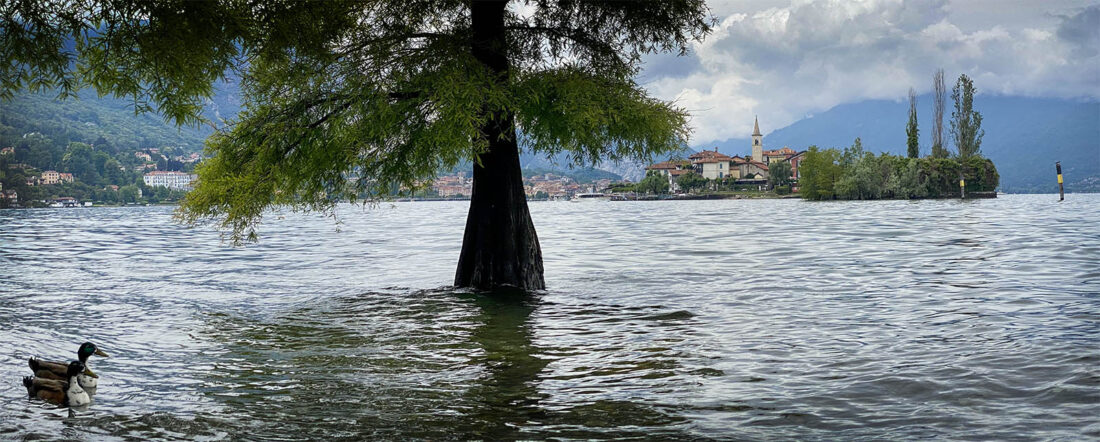
Discovering Lake Maggiore
Italy is sinking under the weight of tourists right now, and it’s not even high-season. I am not too affected by crowds living in such an off-the-radar village, but am always on the lookout for places to go in Italy that are uncrowded and spectacular. We just returned from a week stay on Lake Maggiore and I loved its beauty, diversity of places to visit, and some unexpectedly good restaurants. The times I’ve been to Lake Como the crowds—mostly American—along the promenade in the town of Como have been so overwhelming that it has been hard to walk, even in early Spring. The towns that we visited along the north side of Lago Maggiore and Lake Orta were blissfully empty (as of two weeks ago) and filled with fun things to do, even for the two kids we were traveling with. Surprising as this area is just over an hour from Milan.
Lago Maggiore sits between Italy and Switzerland, nestled at the foot of the Alps. It’s the second largest lake in Italy and extremely deep—lower than sea level for most of its bottom. This depth evens out the heat in summer and the cold in winter, creating a semi-tropical microclimate, perfect for lush hillsides and unusual gardens. We went with extended family to the Villa Valentino, one of the few vacation rentals we’ve been to that is even prettier than the pictures, along with an unusually generous and gracious owner—this place is a gem if you are looking for a house for a large gathering. The deck at the front of the villa had the kind of view of the lake and mountains that made it hard to go inside, let alone get in the car to explore. There were thunderstorms nearly every evening and we watched the dramatic clouds, torrential rain, and lightening approach us from the end of the lake for hours.
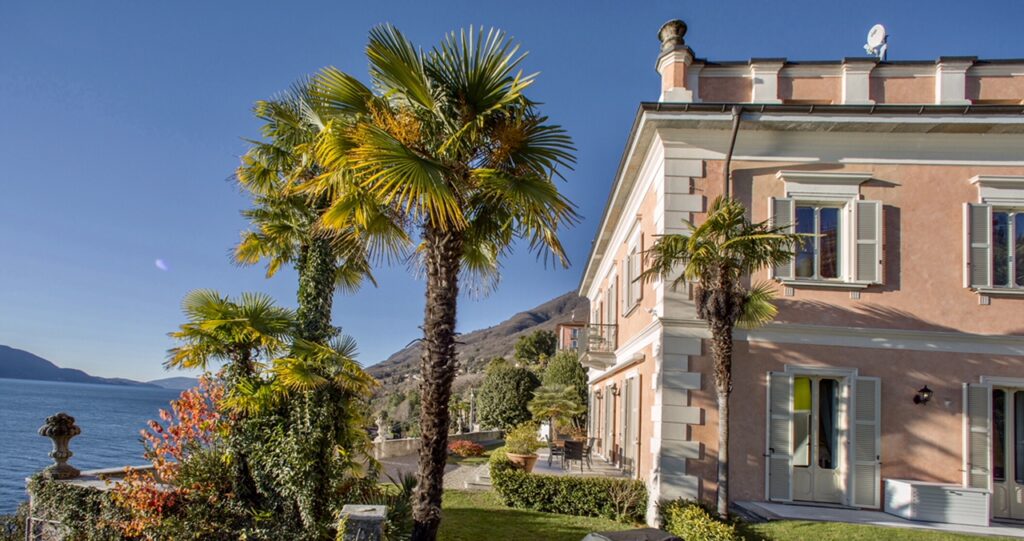
Our first adventure was to Lago d’Orta, known for having the cleanest lake water in Europe. We headed to the beautiful village of Orta San Giulio, with its narrow stone streets, and found the lakefront piazza where the small wooden ferries docked. Our destination was a tiny island, Isola San Giulio, just offshore, crowned by the Basilica di San Giulio, started in the 5th century. That’s not a typo. For a few euros the wooden boats, ferry being such a strong word for a boat that fits about 10 people, took us across to the island.
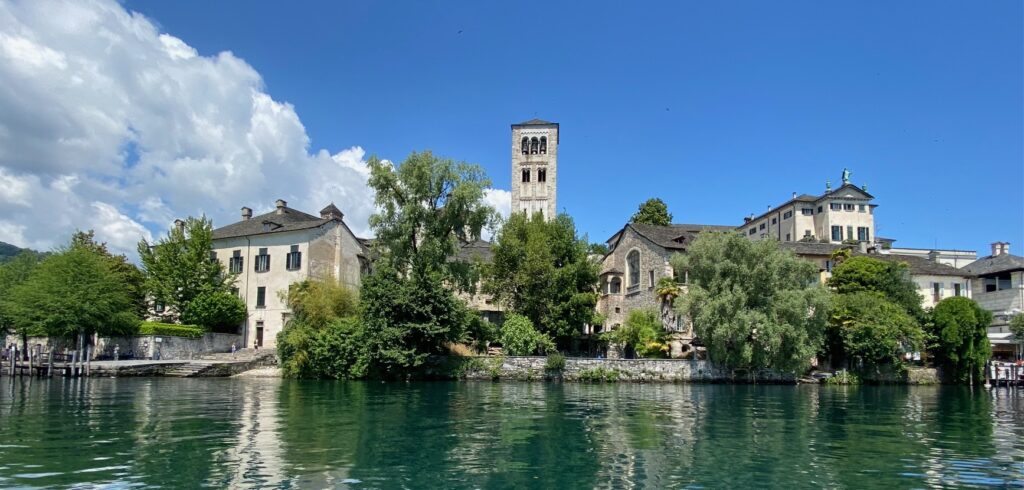
From the water, I spotted a restaurant, Ristorante San Giulio, with a deck over the lake where I assumed that the view might make up for mediocre food. Amazingly, they had a table available for eight right at the lake’s edge and we had a delicious lunch with some unexpectedly kind and attentive waiters—in Italian they had referred to the 9 and 11-year olds as bambini, a common way to talk about kids of all ages, and then stopped to apologize and made sure that the kids knew that they weren’t actually calling them babies.
After lunch we visited the basilica, where the “modern” 12th-century church was built over the foundations of the earlier 5th-century building. We then walked the silent path around the island’s perimeter, skirting the Benedictine monastery that has grown up around the basilica. All along the path are signs encouraging silence, enjoyment of the moment, and contemplation.
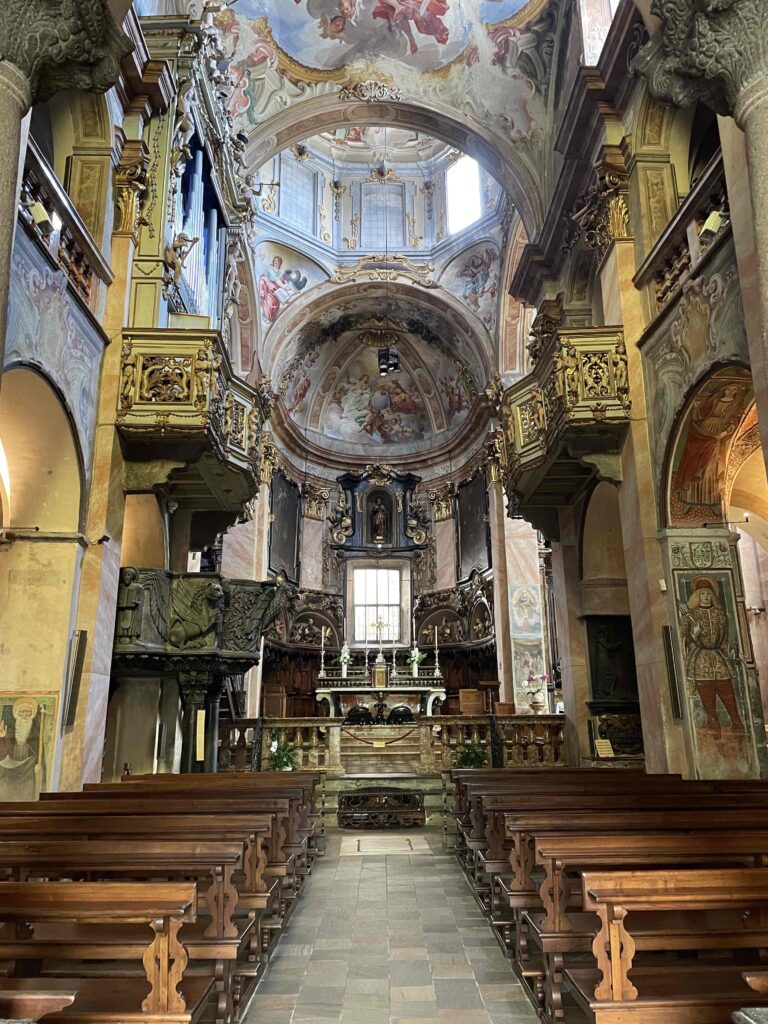
The next day’s exploration of Lago Maggiore took us to not one island, but two. We drove to Stresa, which is often touted as a “mini Cannes”. We drove to the dock and again found a selection of beautiful, small ferries waiting to take us across the water for just a few euros. I love to be on the water, especially on wooden boats, and could have ridden around on these for the rest of the day. Our first destination was the tiny Isola dei Pescatori, or Island of the Fisherman. It’s inhabited year round by a population of 25. We had lunch in a lovely and sophisticated restaurant, Verbano, on a point with a stone deck draped with jasmine and wisteria with views to the Palazzo Borromeo. It also is an inn with twelve rooms.
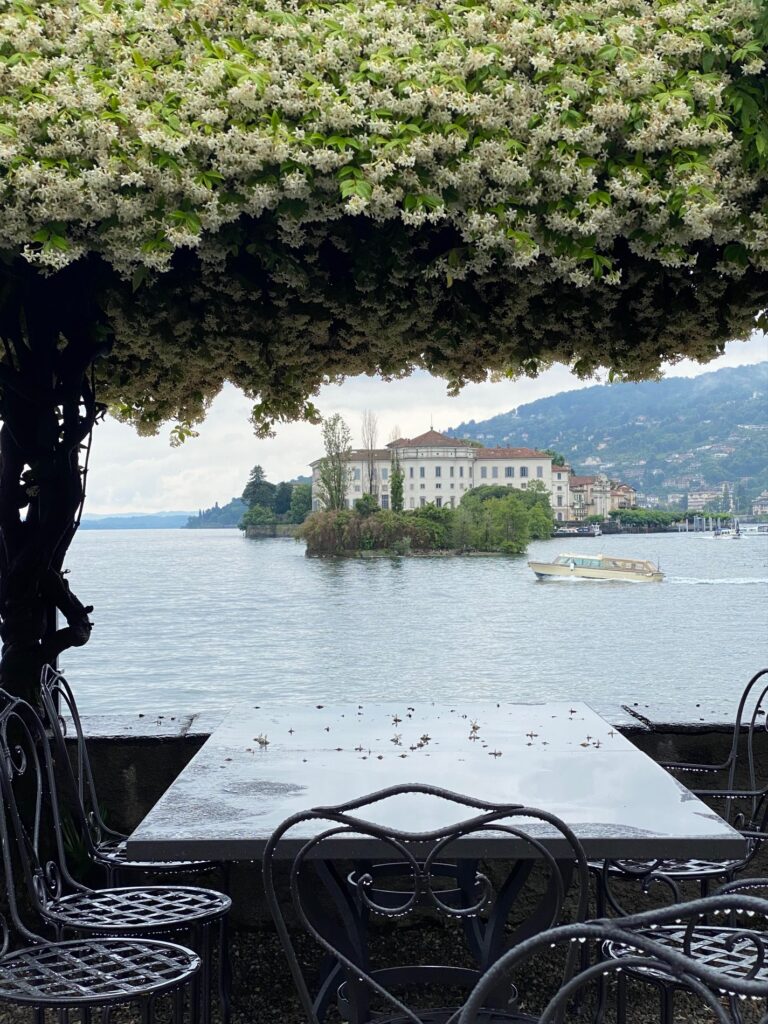
After lunch we boarded another ferry to head to Isola Bella, or beautiful island, with its massive Baroque 17th-century palace and gardens created by the powerful Borromeo family. One of the ornate huge rooms has an alcove with a bed that was used for one night in August 1797 by Napoleon and Josephine. The description on the wall echoes complaints from 200 years earlier—how the Napoleon and 60 troops arrived with only one day notice, required special meals, and left the place “dirty and smelly”. Apparently the Empress Josephine was “much more polite than the great hero.”
Others enchanted by these islands include Hemingway, setting the final chapters of A Farewell To Arms here. “I rowed towards Isola Bella and I approached the walls, where the water suddenly became deep and you could see the wall of rock going obliquely down into the water, and then I climbed up towards the Isle of Fishermen where there were boats pulled dry and men mending nets.” This villa was also the setting of a meeting between the United Kingdom, Italy, and France in 1935 forging an agreement, the Stresa Front, to try to stop the advance of Hitler. This agreement fell apart months later when Italy invaded what is now Ethiopia.
An exploration closer to the villa was to an old church perched above a gorge with a rushing river 85 feet below. There’s a small bridge for cars paralleled by a foot bridge perched above the abyss, impossibly built in the 12th century.
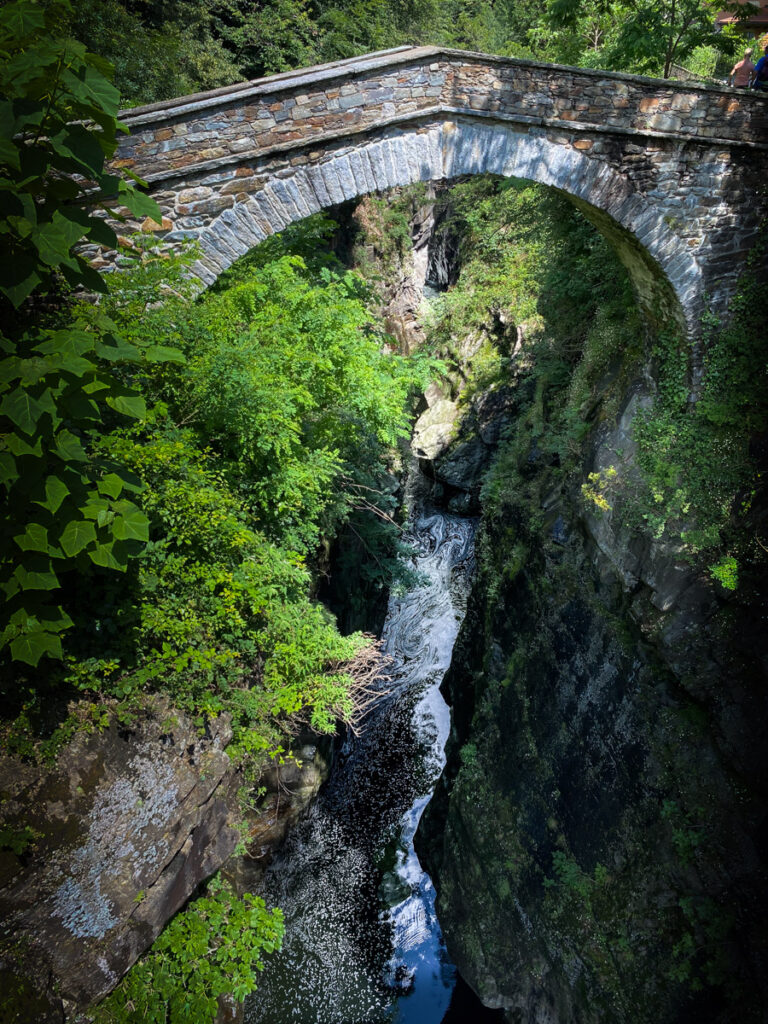
But it wasn’t just scenery that we were after. There’s the charming Ristorante Grotto Sant’Anna where cascading terraces filled with thick stone tables are perched along the side of the gorge. We had such a surprisingly good meal here that we returned a second time. From the restaurant there’s an easy trail that heads downhill, following the river, to the beautiful lakeside town of Cannobio. I thought that the topography looked familiar and realized that we were only 13 miles from the stunning gorge we’d found last year in Switzerland on our road trip to England.
This proximity to Switzerland wasn’t just geographical. We found this area intriguing as you can feel the southern Italy versus northern Italy differences. It felt almost more Germanic than Italian, and the predominant nationality of tourists we saw, other than Italians, was German and Swiss, judging by license plates. Italy’s unification in 1861 was so recent that I am constantly intrigued by how distinct the architecture, food, language, and culture are from region to region. It is part of the reason that Italy is never boring.
We didn’t have time to visit the Hermitage of Santa Caterina del Sasso, an 12th century complex perched on a balcony of rock with a sheer cliff dropping to the water, but I will next trip. And there will be a return trip.






No Comments